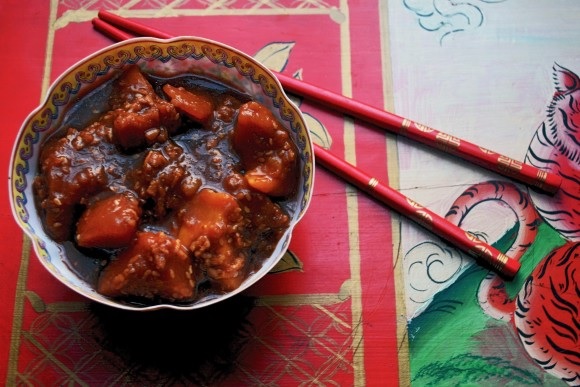One of China’s many gifts to world cuisine is the peach, and with the season in full swing, now is the time to celebrate this most ancient and beloved of fruits. Peaches have been an important aspect of traditional culture in China, and were first described in the agricultural manual, “Xiaxiaozheng,” written almost 4,000 years ago.
The Daoists considered them important symbols of immortality, and other works celebrate their association with youth. For example, in the “Shijing (Book of Odes),” a compilation of poetry and song from about 3,000 to 2,500 years ago, the peach tree is compared to a young bride with brilliant flowers, abundant fruit and luxuriant leaves:
The peach tree is young and elegant;
Brilliant are its flowers.
This young lady is going to her future home,
And will order well her chamber and house.
Culinary uses
The culinary uses of peaches in China are generally more varied than they are in the west. We tend to limit our use of peaches to sweeter dishes, such as pies, cakes, cobblers and fruit salads. Additionally, we use them to add a sweet flavor to oatmeal and other cereals, generally served at breakfast.
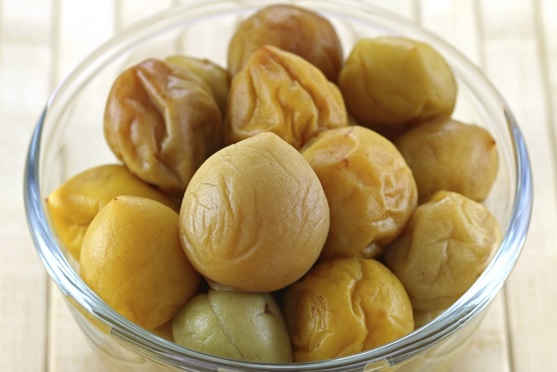
In China, peaches are featured in both sweet and savory dishes. From the familiar peach-based duck sauce, and savory and spicy sauces for meats, to pickled peaches and even half-sour peach kebabs, peaches are everywhere. Peaches in China also tend to be eaten when we would consider them to be a bit under-ripe and hard. So, even in sweeter dishes, they often have a slightly sour tang to them when compared to sweet peach dishes in the west.
Peach origins
Recent archaeological analysis of peach stones (pits) has concluded that peaches were first domesticated in China’s lower Yangzi Valley beginning almost 8,000 years ago. In the area just a little south and west of Shanghai, feral ancestors of today’s peach (Prunus persica) were consciously selected for fruit size and taste, time from germination to fruiting and length of fruiting season.
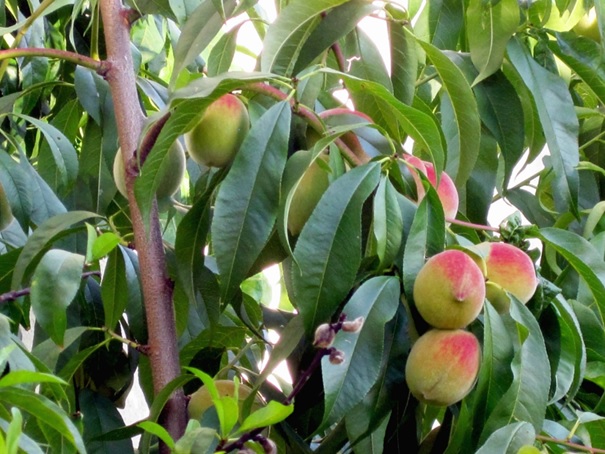
The domestication process was complete in China by about 6,700 years ago, and the peach was introduced to areas of coastal Japan by about 6400 years BP (before the present). The larger, sweeter cultivars spread quickly and were commonly eaten across China by about 4000 BP. Domesticated peaches were first seen in India by about 3700 BP — a tribute to the power of early Silk Road trade.
This new analysis from a team of international scientists is significant and challenges conventional wisdom that the peach was domesticated in northwestern China. It also questions accepted ideas about how early in the history of agriculture that fruit trees became important crops. The earliest changes from feral fruit type appears almost 1,000 years before the beginnings of rice farming in the Yangzi Valley when rhinoceros and elephants were still common wildlife in the area.
Peach varieties
Globally there are more than 2,000 varieties of peaches that can be harvested from late spring through the end of October. Of these, 300 are commonly grown in the United States. Peaches are classified in three groups: freestone, clingstone and semi-freestone. The classifications refer to the way the fruit’s flesh clings to the pit.
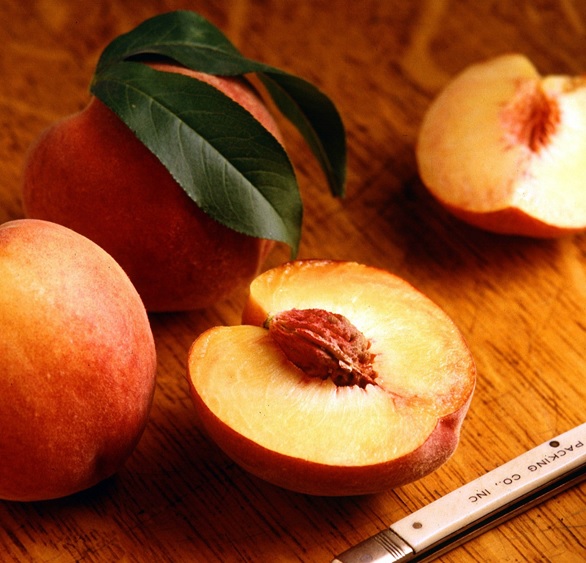
Clingstone varietals ripen between May and August, and have yellow flesh that turns mild red to bright red close the pit. Clingstones also have a soft texture, and a high sugar and juice content, making them good for eating raw. Freestones, on the other hand, have firm texture, relatively low level of juiciness and mild sugar content, making them ideal for baking. Freestone varietals bear fruit between late May and October. The semi-freestones combine two of the most prized qualities of clingstones and freestones — a relatively high sugar content and juiciness along with flesh that doesn’t cling to the pit.
Varying by geography
Peach varieties tend to vary a great deal by geographical area. In the Central Atlantic, most farms are now featuring Glenglo and Early Red Free peaches with Red Havens ripening in the next week or two. August promises the greatest variety of peaches in this area with peaches available for almost any use.
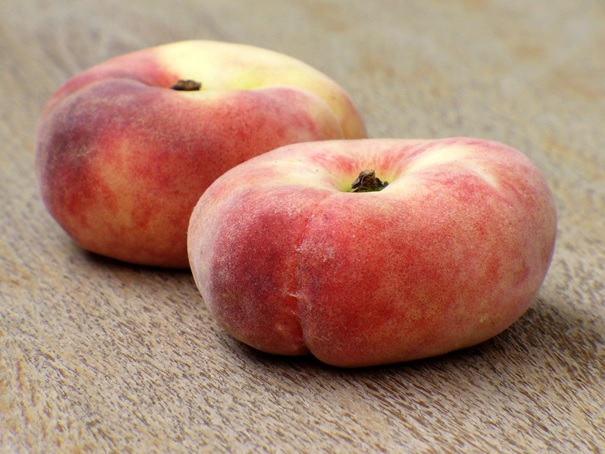
The global produce market makes many varietals available at supermarkets regardless of the local fruiting season. The most interesting additions to these markets has been the flat Saturn and Jupiter peaches, also called doughnut peaches. These are freestone varieties with low acidity and high sugar content, best eaten raw. Interestingly, flat peaches (Peento variety) were introduced to the U.S. from China in 1869, but the idea of a flat peach didn’t catch on with consumers until the late 1990s and early 2000s.
Chinese stir-fried peaches
This is an authentic, savory way to enjoy the fruits of the summer. For a real Chinese touch, use an under-ripe peach, or one with a low-sugar, high-acid content for a sweet and sour treat.
Prep time: 10 minutes
Cook time: 6 to 10 minutes
Total time: 16 to 26 minutes
Yield: 4 servings
Ingredients
1 tablespoon dark soy sauce
3 tablespoons hoisin sauce
2 tablespoons Shaoxing rice wine
1 tablespoon rice vinegar
2 to 3 teaspoons lightly roasted sesame seeds
2 tablespoons sugar (Demerara or palm sugar is best)
6 peaches
2 tablespoons sesame oil
2 to 3 tablespoons grated ginger
1 to 2 tablespoons minced garlic (or Chinese chives)
Directions
1. In a small bowl or cup, combine the soy sauce, hoisin, rice wine, rice vinegar and sesame seeds. Add sugar. Mix well and set aside.
2. Thickly slice peaches and remove the stones. You may skin the peaches if you wish, but it is not mandatory.
3. Heat the sesame oil in a wok until it just starts to smoke, and add the ginger and garlic and stir for 1 to 2 minutes until partially cooked. Add the peaches and stir until well coated. Cover and cook for 2 to 3 minutes, stirring several times, until the peaches start to soften. It may be necessary to cook longer if the peaches are very firm.
4. When the peaches are partially cooked, add the soy sauce mixture and stir well to coat. Cover and cook until peaches are of a desired tenderness, about 2 to 3 minutes longer. Serve immediately.
Main photo: Chinese stir-fried peaches. Credit: Copyright 2015 Laura Kelley
(Originally published in Zester Daily.)

